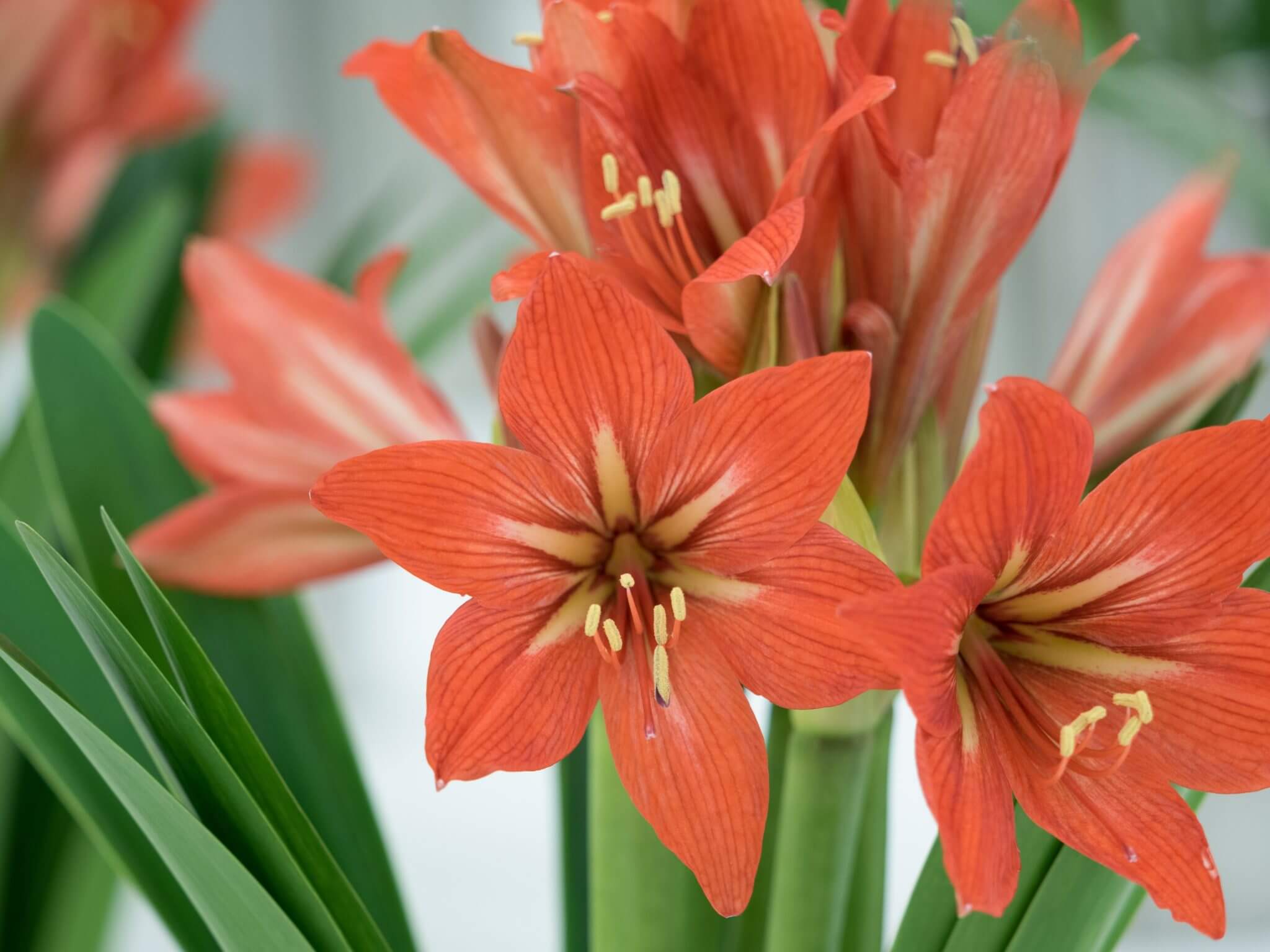
With a bit of effort, it’s easy to have amaryllis that will bloom year-after-year. Let’s start the steps needed to get them to rebloom once the flowers have faded. Remove the flower stalks just above the bulb and set the plant in a bright sunny window during the rest of the winter. Don’t overwater as this can lead to the bulb rotting. It’s best to keep it slightly on the dry side.
Once the weather has warmed up well past freezing in the spring which often is around Memorial Day, it’s time for the plants to be moved outdoors to their summer home. You have a couple options during the summer. With either option, it’s best to move the plants into an area that gets only morning sun for a week, so they become acclimated to being outdoors. The first option is to place the plants on your deck or patio. The other option is to plant the entire container with the bulb in the garden. Ideally during the summer, the plants are placed in an area with bright filtered light. During the summer months feed them with a slow release or water-soluble fertilizer and water as needed. This period outdoors allows the plants to make energy which is stored in the bulbs which then gives you the winter blooms.
In about mid-September or before the first frost, it’s time for the plants to come back indoors.
Remove any dried leaves and store the plant in the coolest area (55 degrees is ideal) of your home. Don’t water the plant during this time. Remove the leaves as they turn yellow.
After about 8 or more weeks in the basement, it’s time to bring the bulbs to a warmer area of the home. This is also the time to replant into a new container or replace the soil in the current container if needed. Keep in mind that amaryllis like to be root bound and don’t have to be transplanted every year. Water the plant once with warm water and store it in a sunny and bright area until it starts growing. Once you see growth, you can water as needed. Be patient and in time the plant will start growing. Some bulbs send up leaves first and then the flowers while others will send the flower stalk up first followed by leaves. Once the plant is done blooming, start this process over.
What does it mean if your plant does not bloom? Most often it’s because it did not get enough sunlight or fertilizer during the summer months. Don’t throw the plant out, try again giving it both more summer light and fertilizer and it should bloom for you in the following years.
